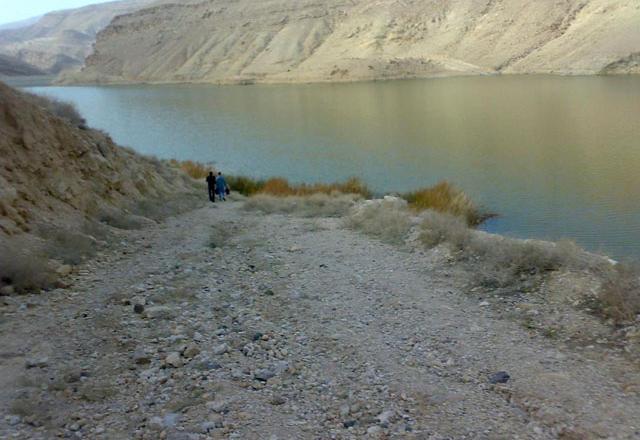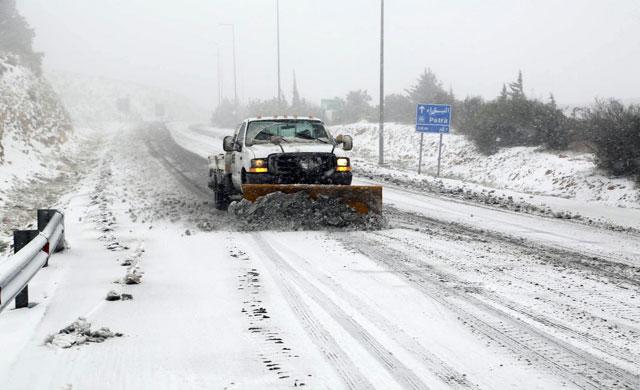You are here
Dams now hold 51.5% of total capacity — Nasser
By Hana Namrouqa - May 11,2014 - Last updated at May 11,2014

AMMAN — More than 16 million cubic metres (mcm) entered the Kingdom’s dams over the weekend, after unstable weather conditions brought torrential rain and thunderstorms to different parts of the country, according to the Ministry of Water and Irrigation.
The 10 major dams now hold 168mcm of water, or 51.5 per cent of their total capacity of 325mcm, while desert dams are now at their full capacity following the heavy rain, according to Water Minister Hazem Nasser.
“The Tannour Dam is at full capacity for the first time. The recent rainfall channelled some 9mcm into the dam,” Nasser said in a statement e-mailed to The Jordan Times.
The 16.8mcm-Tannour Dam is located in Wadi Al Hassa between the Tafileh and Karak governorates in the southern region.
It was established in 1999 and its water is used for the irrigation of crops, according to an official at the ministry.
“The recent rainfall raised dams’ storage levels and will also help recharge the underground aquifers, which suffer from increasing salinity due to random pumping,” Nasser added.
The minister noted that the Kingdom witnessed four main depressions during the 2013/2014 wet season that brought adequate rain; the first was in mid-December last year, which raised the country’s long-term annual average of rainfall by 25 per cent.
The second depression was in the second half of February this year, and it has raised the long-term annual average to 35 per cent, while the third depression in mid-March increased the figure to 72.5 per cent.
“The unstable weather conditions between May 7 and 8 raised the country’s long-term annual average of rainfall to 89 per cent, as the Kingdom received around 7.4 billion cubic metres of rain, the majority of which was in the southern and eastern regions,” the minister said.
Nasser noted that the country witnessed a lack of rain in the northern and central regions between January and February, during which the country usually receives the majority of rain during winter, while the southern region received adequate rain, which is an indication of climate change.
Related Articles
More than 4 million cubic metres (mcm) of rainwater entered the Kingdom’s dams between Sunday and Monday during the wet season’s first depression, according to the Ministry of Water and Irrigation.
AMMAN — The Kingdom’s 11 main dams now hold 48.9 per cent of their total capacity of 333.24 million cubic metres (mcm) following a recent de
AMMAN — Over 7 million cubic metres (mcm) of water flowed into the Kingdom's dams after the recent rainfall, according to the Ministry of Wa

















